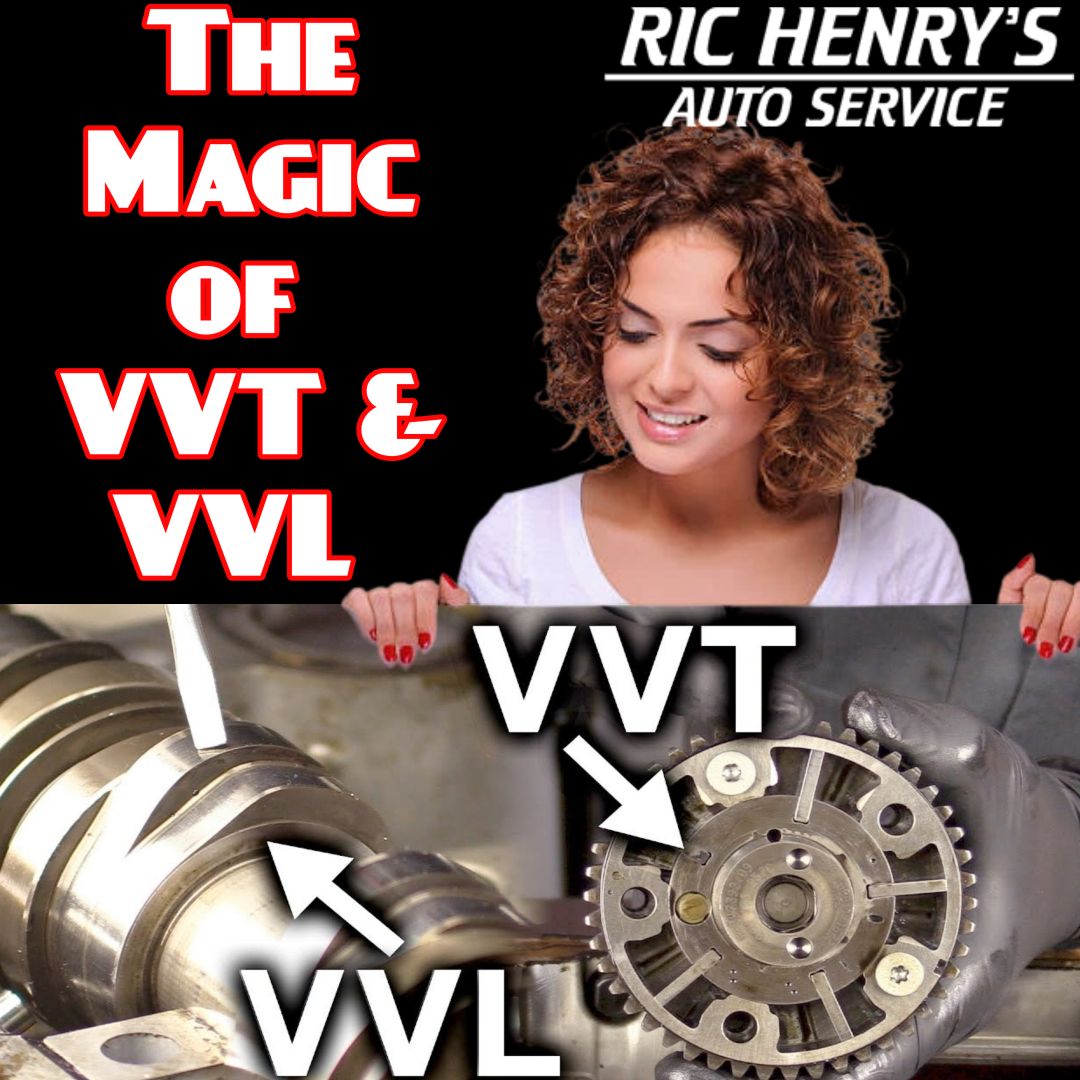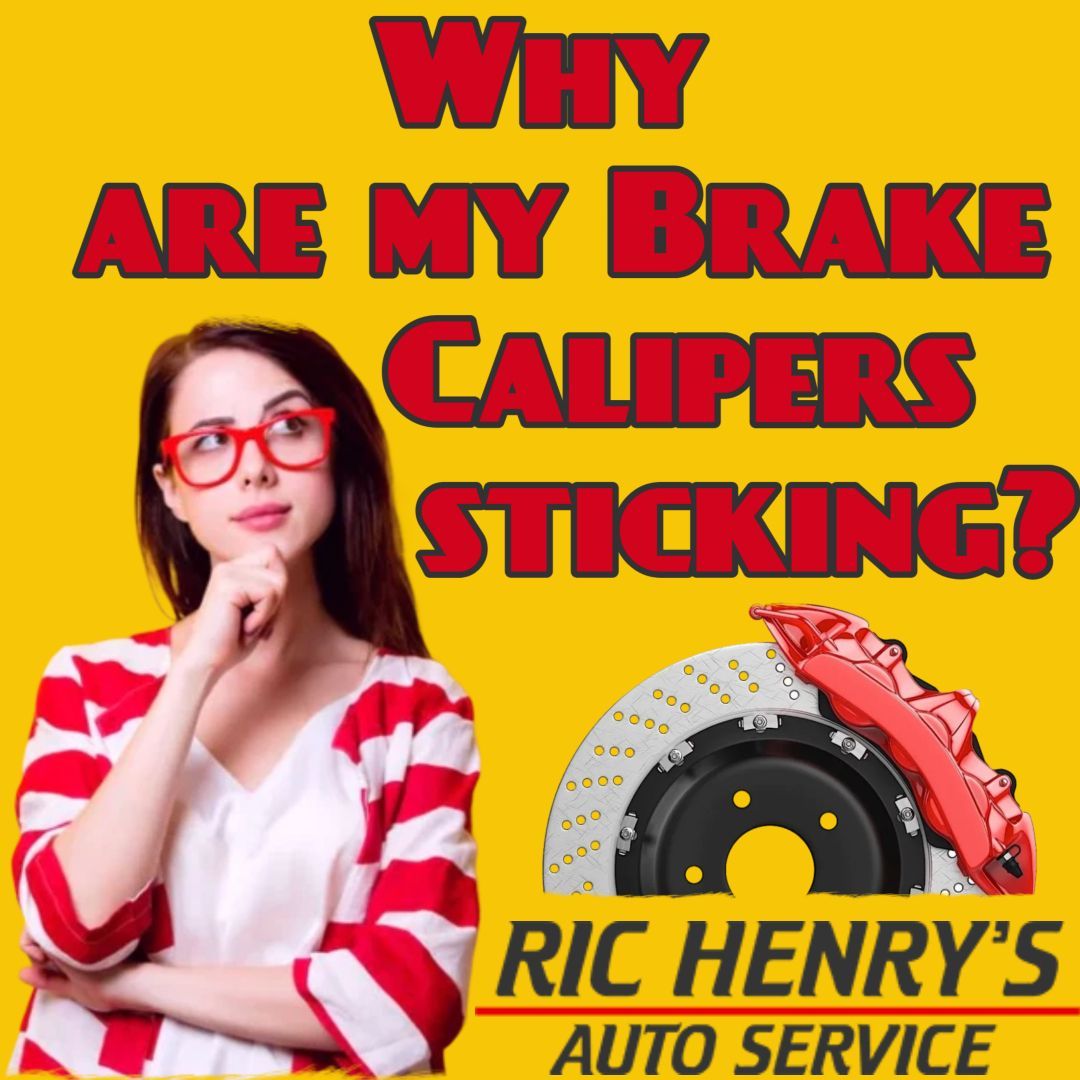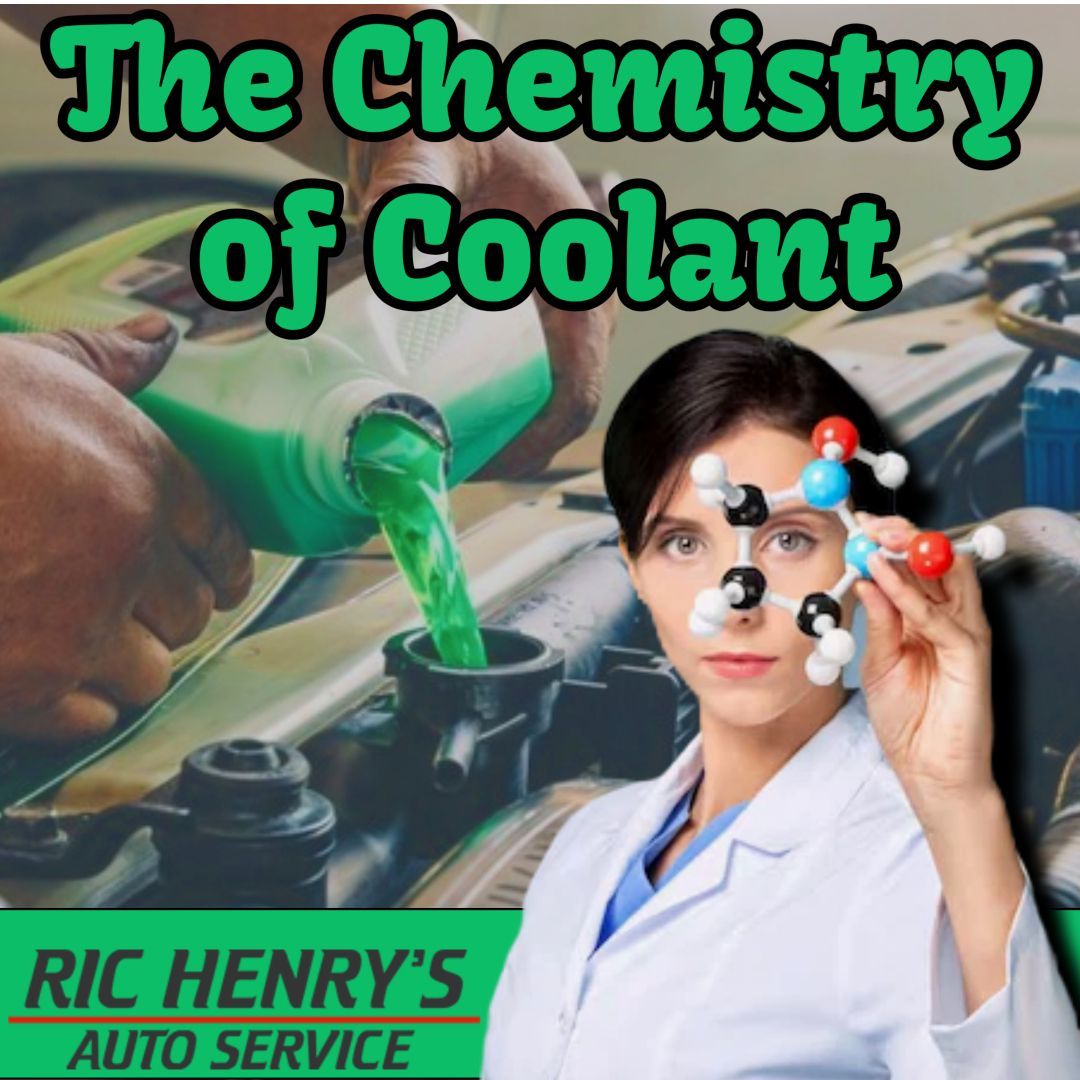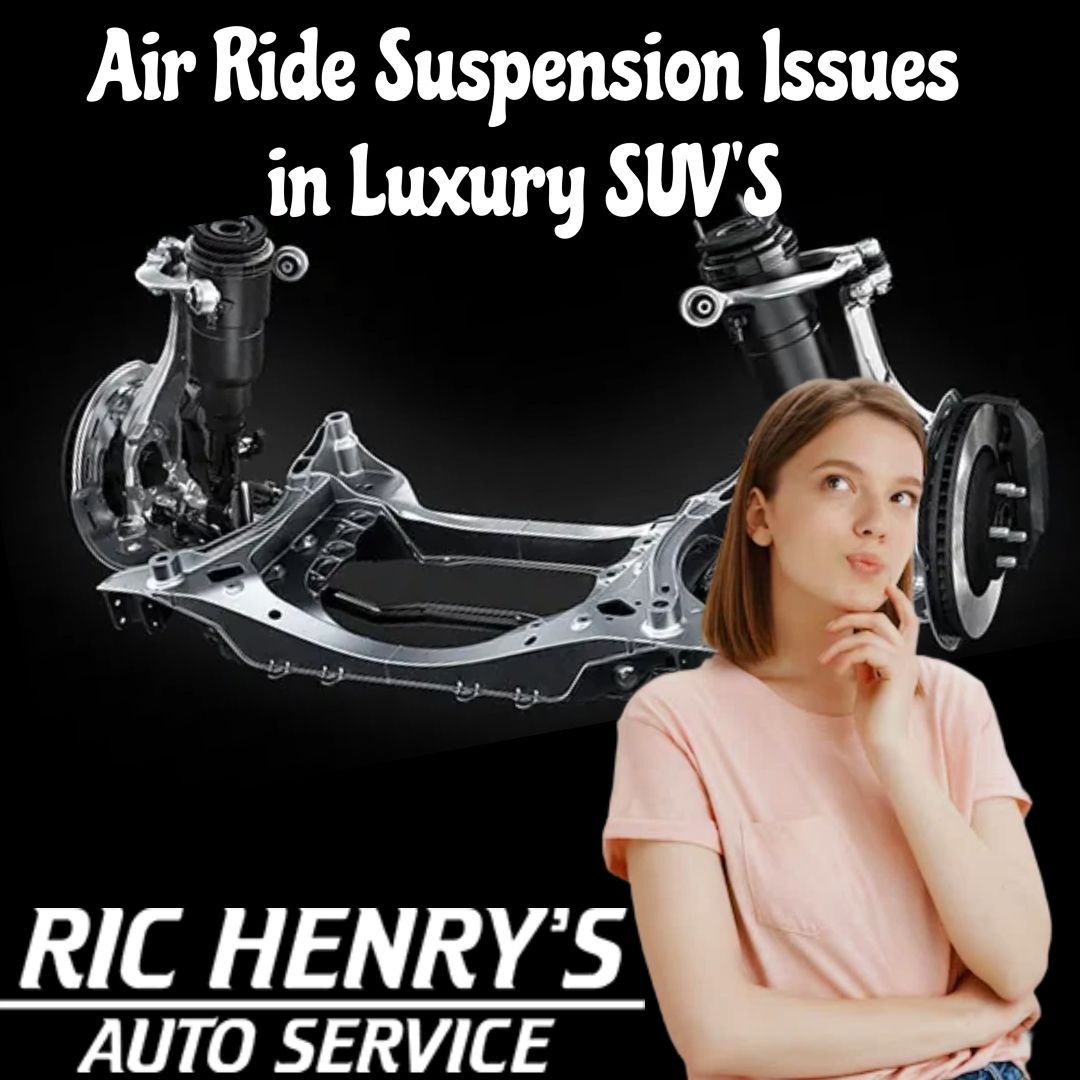The Magic of VVT and VVL Explained
NaTasha Brand • November 4, 2025
West Texas Power & Efficiency

If you’ve ever enjoyed a responsive surge of power merging onto the 67, or appreciated the quiet efficiency of your truck on a long haul to Abilene, you’ve likely felt the magic of modern engine technology at work. Gone are the days of one-trick-pony engines. Today, we’re talking about the brilliant engineering that lets your engine be both a fuel-sipping miser and a power-producing champion: Variable Valve Timing (VVT) and Variable Valve Lift (VVL).
Think of your engine’s valves as its lungs. For decades, these lungs had a fixed, rigid breathing pattern, fine for one specific RPM, but inefficient everywhere else. It’s like trying to run a marathon while only breathing through a coffee stirrer. VVT and VVL systems change all that, giving your engine the biomechanics of an Olympic athlete.
The Dynamic Duo: What Are VVT and VVL?
Let's break down this alphabet soup.
Variable Valve Timing (VVT): The Conductor of the Symphony
VVT is all about when the valves open and close. Imagine the valves are doors. A simple engine opens and closes these doors at the same time, no matter what. VVT uses oil pressure and a clever mechanism (often a phaser on the camshaft) to adjust the timing of these "doors."
• At Low RPM (Cruising through San Angelo): It might delay the closing of the intake valve to improve fuel economy and reduce emissions. It's like taking a deep, efficient breath while walking.
• At High RPM (Passing on the 87): It advances the timing, opening the intake valve sooner and closing the exhaust valve later to cram in more air and fuel for a big power boost. This is the equivalent of panting heavily during a sprint.
Variable Valve Lift (VVL): The Master of Ceremonies
If VVT is about when, VVL is all about how far the valves open. Instead of just changing the timing, VVL systems can physically switch between two different camshaft profiles or use a sophisticated mechanism to vary the lift continuously.
• Low-Lift Profile: A small, gentle opening perfect for low-speed driving, saving fuel and smoothing out idle.
• High-Lift Profile: A massive, aggressive opening that lets the engine "gulp" huge amounts of air for maximum horsepower when you floor the pedal. It’s the difference between sipping a sweet tea and chugging it on a hot day at the Concho River.
The Pros, The Cons, and The Maintenance
Like any advanced technology, these systems come with trade-offs.
VVT: The Refined Performer
• Pros: Excellent balance of power and fuel economy, reduced emissions, smoother idle.
• Cons: Can be complex, and the most common failure point is the VVT solenoid or oil screen. If these get clogged with sludge (often from infrequent oil changes), the system can't function, leading to a check engine light, rough idle, or poor fuel economy.
• Maintenance: The #1 rule for VVT health? Regular oil changes with the correct grade of oil! Clean oil is the lifeblood of the VVT system. Neglect it, and you’re asking for a costly repair.
VVL: The Power Broker
• Pros: Significant power gains across a wider RPM band, the "two engines in one" feeling is genuinely thrilling.
• Cons: Even more mechanically complex than VVT, which can lead to higher repair costs if components fail.
• Maintenance: Again, clean oil is paramount. These systems have more moving parts, actuators, and switches that rely on proper lubrication and engine health.
Why This All Matters for Your San Angelo Drive
These systems work tirelessly to adapt your engine to our unique West Texas driving conditions—from stop-and-go traffic on Bryant Blvd to maintaining speed against a stubborn headwind on the open highway. But when they fail, you’ll know it: loss of power, rough running, poor fuel mileage, and that dreaded check engine light.
Trust Your High-Tech Engine to the Pros at Ric Henry's Auto Service
Fixing a VVT or VVL system isn't a job for a weekend warrior with a basic wrench set. It requires precise diagnosis, specialized knowledge, and the right tools to avoid causing further damage.
At Ric Henry's Auto Service in San Angelo, our experienced technicians are equipped with the same advanced tools and equipment the dealerships use. We can accurately diagnose whether your issue is a simple clogged solenoid or a more complex internal problem. We offer comprehensive auto repair services and back all our work with a strong 3-year/36,000-mile warranty, giving you peace of mind that your investment is protected.
So, the next time your engine feels a little less variable and a lot more vexing, remember who to call. After all, in the battle for power and efficiency, shouldn't your mechanic be as advanced as your engine?


Let’s talk about one of your car's most dramatic performers: the brake caliper. This unsung hero doesn’t get the glamour of a shiny new paint job or the roar of a powerful engine, but when it decides to throw a tantrum, you’ll know all about it. Especially when you’re cruising down the Houston Harte or trying to beat the light on Bryant Blvd., a sticking brake caliper isn’t just an annoyance, it’s a safety hazard and a wallet-drainer. Today, we’re diving deep into the world of the sticky caliper. We’ll cover what it is, how to spot its cry for attention, and what to do when it happens here in San Angelo. The Unlikely Hero: What Does a Brake Caliper Actually Do? Think of your brake system as a symphony. You press the pedal (the conductor), and a series of events unfold. Hydraulic fluid (the music) travels through the lines, and its pressure commands the brake caliper to act. The caliper itself is a relatively simple but crucial clamp. It straddles your brake rotor (that shiny, silver disc you can sometimes see behind your wheel) and contains two key components: 1. The Piston: Forced out by the brake fluid pressure when you press the pedal. 2. The Brake Pads: The friction material the piston squeezes against the rotor. When you hit the brake, the piston pushes the brake pads onto the spinning rotor, creating immense friction and converting your car’s kinetic energy into heat, thereby slowing you down. It’s a brilliant, violent, and essential process. The Tantrum: Tell-Tale Signs Your Caliper is Sticking A "sticking" caliper is one that either doesn’t fully release the brake pad from the rotor when you let off the pedal, or it fails to apply pressure evenly. Here’s how it announces its presence: 1. The Car Pulls to One Side: This is the #1 giveaway. When braking, if your car consistently veers sharply to the left or right, it’s a strong indicator that the caliper on that side is sticking and applying more braking force than its counterpart. It’s like your car has a favorite side of the road. 2. The Distinctive Hot & Smelly Aroma: A sticking caliper is constantly creating friction, which means it’s constantly generating heat. After a normal drive, if you smell a sharp, acrid burning odor from one wheel (and we’re not talking about the scent of mesquite from the food trucks), that’s a red flag. Carefully approach the wheel and feel for intense radiant heat. Caution: Don't touch the wheel or rotor! 3. Unusual Grumbling or Dragging Noises: You might hear a constant, low-frequency grinding or rubbing sound that changes with your speed, even when your foot is off the brake. It’s the sound of your brake pad having an unwanted, permanent playdate with your rotor. 4. Your Fuel Economy Takes a Nosedive: Is your gas gauge dropping faster than usual? A stuck caliper is essentially like driving with your foot lightly on the brake all the time. Your engine has to work much harder to overcome that constant drag, burning more fuel in the process. 5. Uneven Brake Pad Wear or Excessive Dust: During a tire rotation or when you just happen to look, you might notice that the inner brake pad on one wheel is significantly more worn than the outer pad, or more worn than the pads on the other side of the car. You might also see more black brake dust on one wheel compared to the others. The Fix: From a Simple Slide to a Full Replacement So, your caliper is staging a sit-in. What now? • The Simple Fix (The Clean and Lube): Sometimes, the issue is just a stuck or corroded slide pin. These pins allow the caliper to float back and forth. A technician can clean and re-lubricate them with high-temperature grease, which often solves the problem. It’s the equivalent of giving the caliper a good talking-to. • The Common Fix (The Rebuild/Replacement): More often, the piston seal inside the caliper has deteriorated, or the piston itself is corroded. In this case, the caliper either needs to be rebuilt with a new seal and piston boot or, more commonly and reliably, replaced entirely with a new or quality remanufactured unit. This is almost always a job for a professional, as it involves the critical hydraulic brake system. Why Trust Ric Henry's Auto Service With Your Brakes in San Angelo? When your safety is on the line, you don’t trust your brakes to just anyone. At Ric Henry's Auto Service, we get it. We’re your neighbors, and we drive the same dusty, sun-baked roads you do. • Our experienced technicians are equipped to handle everything from a simple brake service to a complete caliper replacement, using the same premium tools and equipment the dealerships use. • We offer comprehensive auto repair services, so while we’re fixing your brakes, we can check your alignment, tires, and other critical systems to ensure everything is in top shape for West Texas driving. • Most importantly, we stand behind our work. Every service we provide comes with a robust 3-year/36,000-mile warranty for your peace of mind. Don't let a sticking caliper compromise your safety and cost you more in the long run. If you’re experiencing any of these symptoms, it’s time to stop by and see us.




Share On: